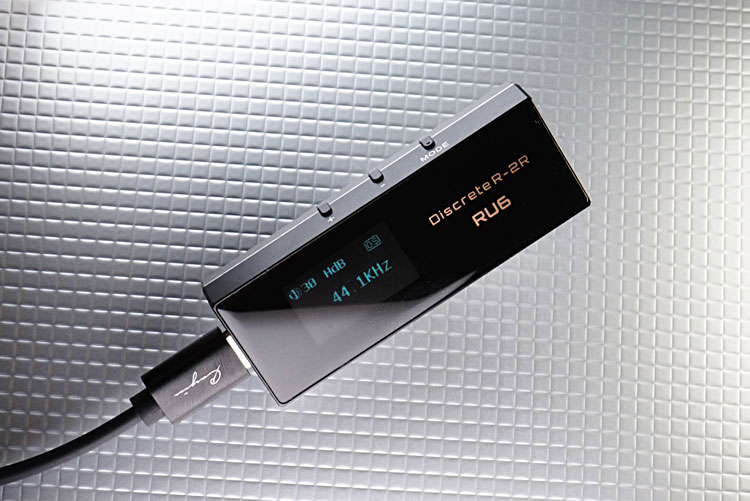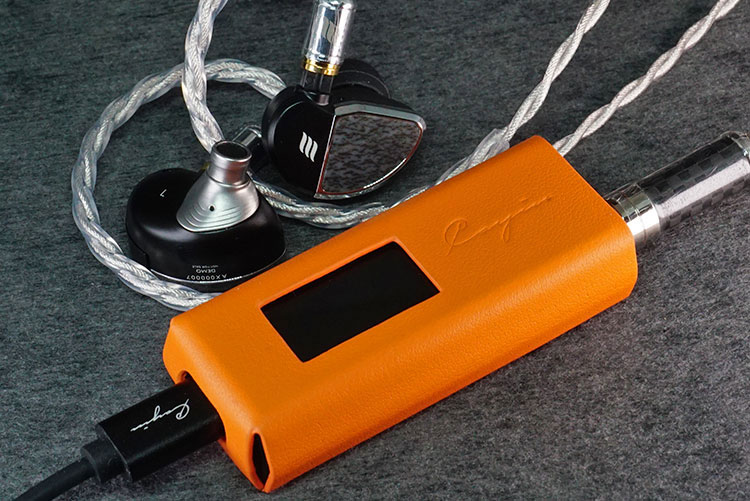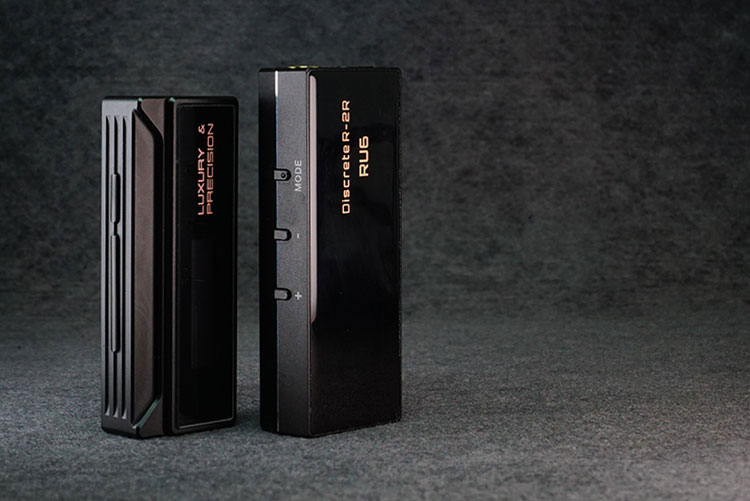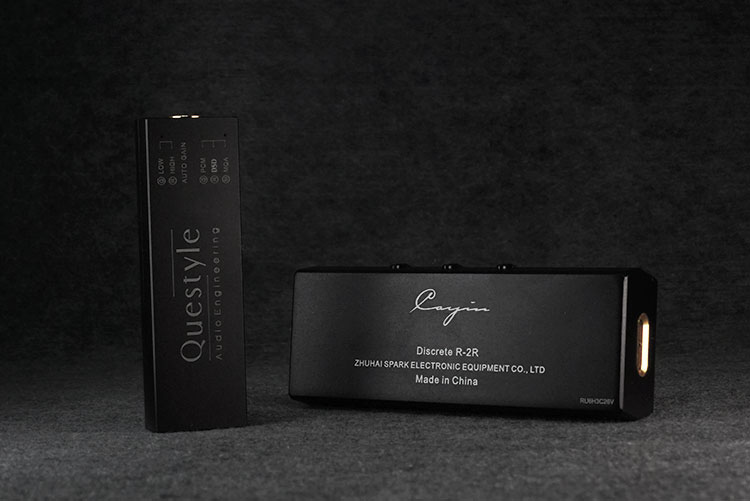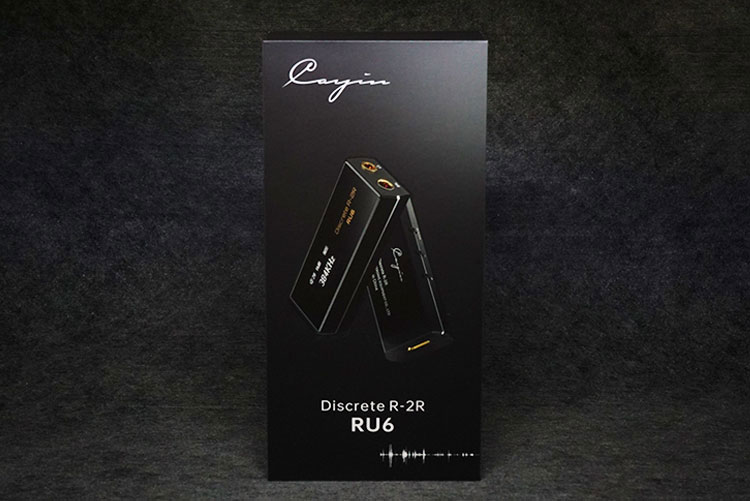Synergy
Efficiency
The RU6 is fairly quiet on a phone and sounds darker in the background using an iPad Pro, possibly due to EMF/ phone signal interference, but it is not noticeable when the music sets in.
With custom IEMs or other highly sensitive gears like the Campfire Audio Andromeda, you will notice a little bit more noise in the background, though this “retro experience” does not necessarily affect dynamic range that much.
Power
The RU6 achieves 213mW of output power with a 4.4mm balanced connection, which is considered quite powerful on a dongle. You can pair power-hungry IEMs like the Shanling ME700 and Earsonics STARK quite well with both delivering firm bass and lush mids.
The earlier reviewed Effect Audio Axiom also sounds well-driven so the R-2R technology seems to offer higher perceived output power than commonly integrated chipsets. Although SNR isn’t very strong on paper, the RU6 delivers crispy bass string slaps and very lush, full-sounding sweeps in the mids.
My previous experience with R-2R designs gave me the impression the attacks would be softer and the treble would be more rounded. Yet this is not the case for RU6, perhaps due to the stepped volume which doesn’t take away its edges.
Pairings
Measuring 0.5Ω in output impedance, the RU6 has good synergy with sensitive IEMs with articulated BA implementations like the Andromeda.
However, it can drive darker IEMs with stronger bass like the Effect Audio Axiom or the Dethonray Tender 1 Planar IEM with its power. In such a case, the oversampling mode offers good flexibility for the RU6 to sound more precise and textured.
When you put the RU6 with IEMs that have thicker bass it will sound very immersive with sufficient power to drive some dynamic IEMs out of the mist and image the vocal clearly to cut through the mix. However, DAPs like the N6ii will still have an advantage in terms of delivering raw power for stronger dynamics.
In general, pairing with sensitive higher-end IEMs works great especially with more extended, textured, and faster multi-BA designs. Blending together the smooth signature and elaborated midrange on the RU6 sounds very soothing for a wide range of music and yields good separation power that allows small ensembles to sound properly defined.
Select Comparisons
Luxury & Precision W2
$299
Technical
While both items come in the form of a dongle, the hardware between the two has some stark differences.
The L&P W2 employs Cirrus Logic’s CS43198 chipsets which support native DSD256 decoding and SPDIF lineout. RU6 uses proprietary circuitry and converts DSD into PCM, supporting up to DSD256 decoding as well.
The W2 outputs up to 230mW @32Ω on balanced mode and the RU6 is outputting 213mW @ 32Ω load, which are quite similar.
The W2 also features an FPGA chipset for digital sound processing, discrete oscillators, and separated PSU for amping and decoding. This is a totally different hardware implementation from RU6’s R-2R ladder structure and stepped potentiometer. On the board, you can find relay components for pop sound elimination, which can also be found on the RU6.
The W2 has more digital filtering options inherited from the Cirrus Logic DAC chip defaulted to oversampling filtering. There is also a non-oversampling (NOS) mode under its 5 filters options. In comparison, the RU6 confidently focuses only on oversampling and non-oversampling options.
Design
Both W2 and RU6 are packed in a rather small package, however, the W2 is about ¾ the size of the RU6. I would still rate their overall portability as quite similar.
The W2 has a techier aesthetic with more intricate matching and a matte carbon panel at the back. The RU6 on the other hand has a cleaner and less geeky housing and some glossy outlines on the sides.
Strictly speaking, when you put on the leather case the two looks pretty similar, but the Hermes colored RU6 case is definitely more eye-catching.
Performance
While the W2’s delta-sigma approach focuses on technicalities, especially the time domain. The RU6 on the other hand is completely different in architecture yet both designs yield excellent sonic qualities for such size.
There is some major difference in presentation, where the W2 sounds faster and more resolving, contrasting to RU6’s denser, more elaborated, cohesive, and melodious midrange performance.
On the RU6 the virtuoso is given more authority and presence, as if you are listening to LS3/5A on tube amps that sound smoother and sweeter, with the edges pictured more clearly when the oversampling mode is on. The W2 has a stronger sense of resolution and extension to offer, but do not expect it to sound as organic or soothing in the mids as the RU6.
In terms of pairing, W2 works well with IEMs that are more colored, and the RU6 works with IEMs that are extended with stronger resolving power. Depending on what IEMs you are pairing to the two dongles, both offer good flexibility with DSP options and could yield very immersive results with excellent sonic qualities.
To be more specific, when you compare percussion instruments, you can feel the RU6 sounding more realistic in texture especially when focusing on the cymbals, the midrange coloring is beautiful and exceptionally natural. The W2 is comprehensively stronger in resolving power and tuned to sound more expanded.
Questyle M12
$139
Technical
The Questyle M12 is an official ESS collaboration item with ESS’s ES9281AC DAC. It offers a Time Domain Jitter Eliminator and hardware MQA decoding technologies inside which are not available on either the W2 or the RU6.
This tiny dongle is implemented with Questyle’s own SiP Current Mode Amplifier and a TOREX power control module, which embeds a smart detection system to different loads with varying impedance values, optimizing dynamics automatically.
The proprietary SiP module which offers current mode amplification differentiates the M12 from its rivals with a focus on dynamics and transient performance, energizing vocals, and the bass very well. However, its output is a lot less than the RU6, measured at just 46.11mW max, and doesn’t come with balanced out connections.
Design
The M12 has a very clean design with no screen, just some LEDs to signal the data type and gain level. That can be explained by the automatic gain adjustment and the lack of DSP profiles. Its size is roughly 1/3 of the RU6 and feels quite a bit more compact and is a lot easier to stick to the back of the phone.
When it comes to the aesthetics and functionalities, also the presence of physical buttons for precise volume adjustment, the RU6 is way more user-friendly, especially for sensitive IEMs that need precise volume steps.
Performance
Questyle’s current mode amping technologies performs extremely well, delivering a full and textured sound for sensitive IEMs. Both brands excel in picturing the soundscape naturally, offering articulated and engaging midrange frequencies.
Compared with the 3.5mm output on RU6 the M12 has the more textured treble, with transients captured nearly as good, yet the M12 is only half the price and 1/3 of RU6’s output power.
When putting on dynamic IEMs or hybrids like the Shanling ME700 the M12 struggles to sound as dense and defined. The RU6 holds up much better to deliver clean and edged vocals.
The 4.4mm output of the RU6 can sound more layered and resolving. It is also able to deliver superior density in the bass, while the oversampling mode offers the RU6 more flexibility to boost the dynamics and details retrieval power.
Nevertheless, the M12 with soothing mids is a great option if you use sensitive IEMs on a 3.5mm connection only. The extra DSP features, power, and comprehensive performance on RU6 go some way to explain the price difference.
Our Verdict
The Cayin RU6 offers a different “analog” approach in the world of highly integrated delta-sigma chipset packages and DSP filters. One that preserves a tube-like musical quality but with much finer volume control and packed within a favorable form factor.
I have never imagined an R-2R dongle could come alive let alone offer oversampling features and step volume features on USB-powered devices. It gives the system a lot of flexibility and modern technicalities yet still delivers a distinctly natural sound with a lot of character.
Cayin RU6 Specifications
- DAC: 24bit Discrete R-2R
- Output: 5mm + 4.4mm Balanced
- Display: 0.96″ 128×64 OLED
- Digital Decoding: PCM: 44.1kHz~384kHz
- DSD: DSD64/128/256
- Dimension: 65mm x 25.4mm x 13.7mm
- Chassis: CNC Aluminum
- Net Weight: ~28g
3.5mm Headphone Output Specs
- Power Rating 138mW@32ohms
- Response 20Hz-20kHz (+-0.5dB)
- THD+N 0.032% (1kHz, Output: 0.5V)
- Dynamic Range 109dB (20Hz-20kHz, A-Weighted)
- SNR 113dB (20Hz-20kHz, A-Weighted)
- Output Impedance 0.5ohm
4.4mm Headphone Output Specs
- Power Rating 213mW@32ohms
- Response 20Hz-20kHz (+-0.5dB)
- THD+N 0.04% (1kHz, Output: 1V)
- Dynamic Range 110dB (20Hz-20kHz, A-Weighted)
- SNR 114dB (20Hz-20kHz, A-Weighted)
- Output Impedance 1ohm

